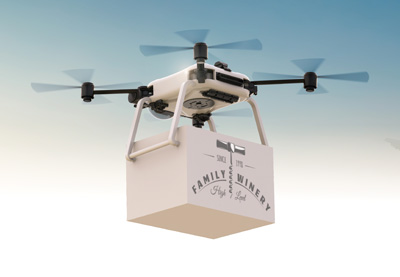Future Wine Trends
Wine drinkers may soon be sipping wine from bottles made with sugar, with no label and delivered via drone, according to a report by Armit Wines and food futurologist, Morgaine Gaye. Here’s a look at what may be the next big trends in wine.
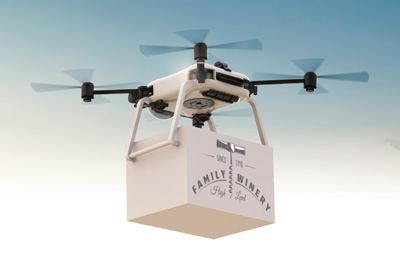
Drone Delivery. Drones are already being put to use in vineyards to monitoring purposes, and Amazon has already began working on Prime Air, a drone service able to deliver goods weighing up to five pounds and within 30 minutes.
No Label. Wine brands will soon produce label-less bottle that smartphones can scan to retrieve information details. The report predicts new shapes, sizes and colors of bottles, moving away from the traditional look.
Wine Vending Machines. The report predicts that alcohol will be purchasable from vending machines, using iris recognition technology to verify that buyers are of legal age.
Sugar Bottles. Options include compostable, non-plastic glasses made from cornstarch, and even edible bottles, made from a sugar substitute, such as isomalt, according to the report. This could also include wine glasses.
www.decanter.com
Wine Worldwide
Recent wine tariffs make it difficult to sell fabulous California wines in Europe. And as the following chart shows, American wines aren’t best sellers in Europe’s traditional wine regions. But knowing how proud Italian, French or Spanish people are of their wines, it’s doubtful that their lack of interest in California’s finest grapes has anything to do with tariffs.
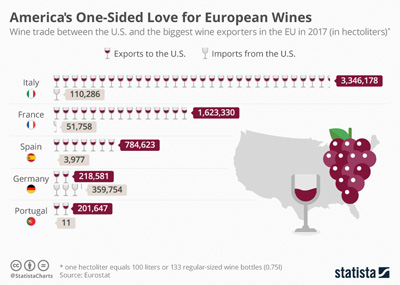
Sterling Style
Move over boxes and cans—Sterling Vineyards recently launched a trio of wines in resealable aluminum bottles designed for both convenience and style. The recyclable aluminum bottles feature a brushed texture in a tall, narrow, 375ml-size accented by a color cap keyed to the varietal and echoed by a color bar at the bottom of the bottle. Chardonnay, Cabernet Sauvignon and Rosé from the Sterling California Vintners Collection are the initial offerings, which consumers noted to be “sleek, modern and unique,” according to Rob Knott, brand director of Sterling. The wines are line-priced at $7.99. The new packaging is part of Sterling’s goal to incorporate the “Sterling Style” in its products. Says Knott, “We’re bringing something different and very much in tune with what consumers expect from Sterling.”
bottles designed for both convenience and style. The recyclable aluminum bottles feature a brushed texture in a tall, narrow, 375ml-size accented by a color cap keyed to the varietal and echoed by a color bar at the bottom of the bottle. Chardonnay, Cabernet Sauvignon and Rosé from the Sterling California Vintners Collection are the initial offerings, which consumers noted to be “sleek, modern and unique,” according to Rob Knott, brand director of Sterling. The wines are line-priced at $7.99. The new packaging is part of Sterling’s goal to incorporate the “Sterling Style” in its products. Says Knott, “We’re bringing something different and very much in tune with what consumers expect from Sterling.”
Petaluma Winegrowers Celebrate 1st Anniversary
The Petaluma Gap Winegrowers Alliance (PGWA) is cheering on its growers and winemakers for the wide range of wines now bearing the AVA on the label and for the accolades these wines are receiving from top wine writers and reviewers. Winemakers submitted the first wine labels bearing the Petaluma Gap American Viticultural Area (AVA) on Jan. 8, 2018, to the Alcohol, Tobacco Tax and Trade Bureau for approval by the federal government.
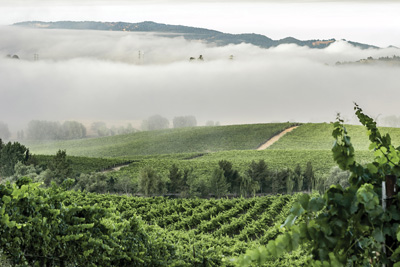

“We are thrilled to see so many of our winery members receiving 90+ point ratings on the wines they’re making from grapes grown in the Petaluma Gap,” said Justin Seidenfeld, director of winemaking for Rodney Strong and president of the Petaluma Gap Winegrowers Alliance in a prepared statement. “The wind that ushers in the cool air from the Pacific and that defines our wines is challenging for our growers, but also rewarding for our winemakers. Grapes grown in the Petaluma Gap typically ripen more slowly, but there are many rewards that result from the longer hang-time.”
Founded in 2005, the PGWA is committed to educate member of the wine trade and consumers about the Petaluma Gap and to increase awareness of the region’s unique growing conditions.
Living Wine Labels
Think the wine bottle is speaking? It’s not the glasses of wine kicking in—with Living Wine Labels, it’s the app. Living Wine Labels utilizes augmented reality through cell phone facial recognition technology to create engaging video clips broadcast directly from the wine label. Sound like a bunch of techno mumbo-jumbo? Here’s how it works: purchase any of the participating wines with the Living Wine Label feature, download the app, scan the label with your phone and watch the bottle come to life with a unique story.
There are eight brands of wine to choose from under the current Living Wine Labels roster offered through Treasury Wine Estates, including wines from Chateau St. Jean and Beringer Bros. The AR or augmented reality technology helps the participating wines offer a little something extra compared to the hundreds of thousands of wines on the market.
“Eighty percent of purchases are made at point of purchase. We wanted to create something outside of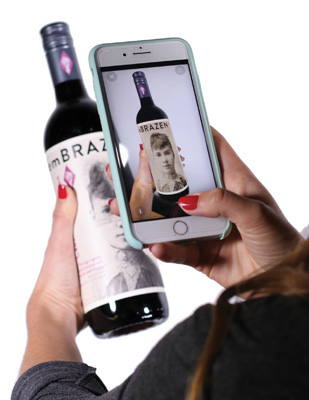 that,” says Ming Alterman, director of digital performance and partnerships with Treasury Wine Estates. “The next time someone is at the store feeling overwhelmed looking at the all the wine available, this might make them remember our wines and make a purchase.” Alterman says Treasury Wine Estates is the first to market and the first wine producers to utilize this technology. “The labels do come to life and it’s the best use of the technology I’ve seen,” he says.
that,” says Ming Alterman, director of digital performance and partnerships with Treasury Wine Estates. “The next time someone is at the store feeling overwhelmed looking at the all the wine available, this might make them remember our wines and make a purchase.” Alterman says Treasury Wine Estates is the first to market and the first wine producers to utilize this technology. “The labels do come to life and it’s the best use of the technology I’ve seen,” he says.
Living Wine Labels started with the Australian brand, 19 Crimes, in an effort to target Millennials. “We wanted to tell the story of the convicts represented on the bottles,” Alterman says.
The positive response from the campaign proved a market for VR technology could exist in the world of wine. Alterman says the success of 19 Crimes enabled Treasury Wine Estates to extend the feature to more brands. Their partnership with “The Walking Dead” series uncorked massive appeal as demand began to exceed supply. That demand isn’t only from consumers as Alterman explains, “It’s resonated with our distributor and retailers as well.” Those thirsty for a taste of the brand’s multiple AR experiences can visit www.livingwinelabels.com.


